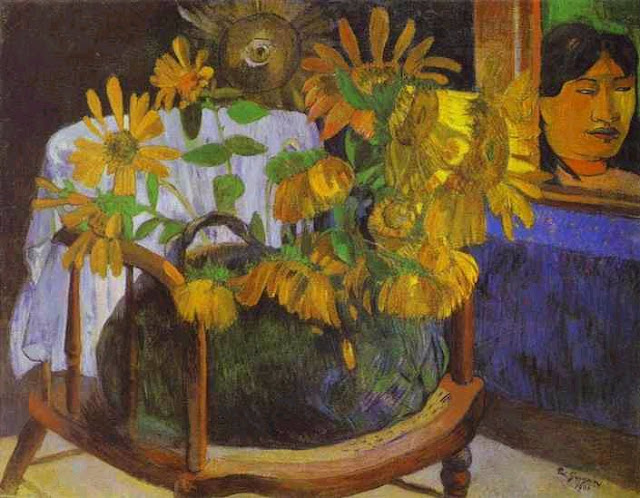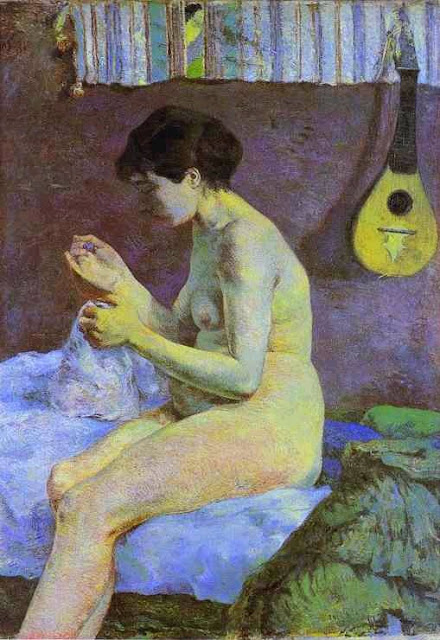Paul Gaugin (1848-1903) was a French postimpressionist painter whose lush color, flat two-dimensional forms, and subject matter helped form the basis of modern art. Gauguin was born in Paris on June 7, 1848, into a liberal middle-class family. After an adventurous early life, including a four-year stay in Peru with his family and a stint in the French merchant marine, he became a successful Parisian stockbroker, settling into a comfortable bourgeois existence with his wife and five children. In 1874, after meeting the artist Camille Pissarro and viewing the first impressionist exhibition, he became a collector and amateur painter. He exhibited with the impressionists in 1876, 1880, 1881, 1882, and 1886. In 1883 he gave up his secure existence to devote himself to painting; his wife and children, without adequate subsistence, were forced to return to her family. From 1886 to 1891 Gauguin lived mainly in rural Brittany (except for a trip to Panama and Martinique from 1887 to 1888), where he was the center of a small group of experimental painters known as the school of Pont-Aven. Under the influence of the painter ¨¦mile Bernard, Gauguin turned away from impressionism and adapted a less naturalistic style, which he called synthetism. He found his inspiration in the art of indigenous peoples, in medieval stained glass, and in Japanese prints; he was introduced to Japanese prints by the Dutch artist Vincent van Gogh when they spent two months together in Arles, in the south of France, in 1888. Gauguin's new style was characterized by the use of large flat areas of nonnaturalistic color, as in Yellow Christ (1889, Albright-Knox Gallery, Buffalo, New York)
Paul Gaugin (1848-1903
Kamis, 05 April 2012
Paul Gaugin (1848-1903) was a French postimpressionist painter whose lush color, flat two-dimensional forms, and subject matter helped form the basis of modern art. Gauguin was born in Paris on June 7, 1848, into a liberal middle-class family. After an adventurous early life, including a four-year stay in Peru with his family and a stint in the French merchant marine, he became a successful Parisian stockbroker, settling into a comfortable bourgeois existence with his wife and five children. In 1874, after meeting the artist Camille Pissarro and viewing the first impressionist exhibition, he became a collector and amateur painter. He exhibited with the impressionists in 1876, 1880, 1881, 1882, and 1886. In 1883 he gave up his secure existence to devote himself to painting; his wife and children, without adequate subsistence, were forced to return to her family. From 1886 to 1891 Gauguin lived mainly in rural Brittany (except for a trip to Panama and Martinique from 1887 to 1888), where he was the center of a small group of experimental painters known as the school of Pont-Aven. Under the influence of the painter ¨¦mile Bernard, Gauguin turned away from impressionism and adapted a less naturalistic style, which he called synthetism. He found his inspiration in the art of indigenous peoples, in medieval stained glass, and in Japanese prints; he was introduced to Japanese prints by the Dutch artist Vincent van Gogh when they spent two months together in Arles, in the south of France, in 1888. Gauguin's new style was characterized by the use of large flat areas of nonnaturalistic color, as in Yellow Christ (1889, Albright-Knox Gallery, Buffalo, New York)
Langganan:
Posting Komentar (Atom)















































































































Tidak ada komentar:
Posting Komentar